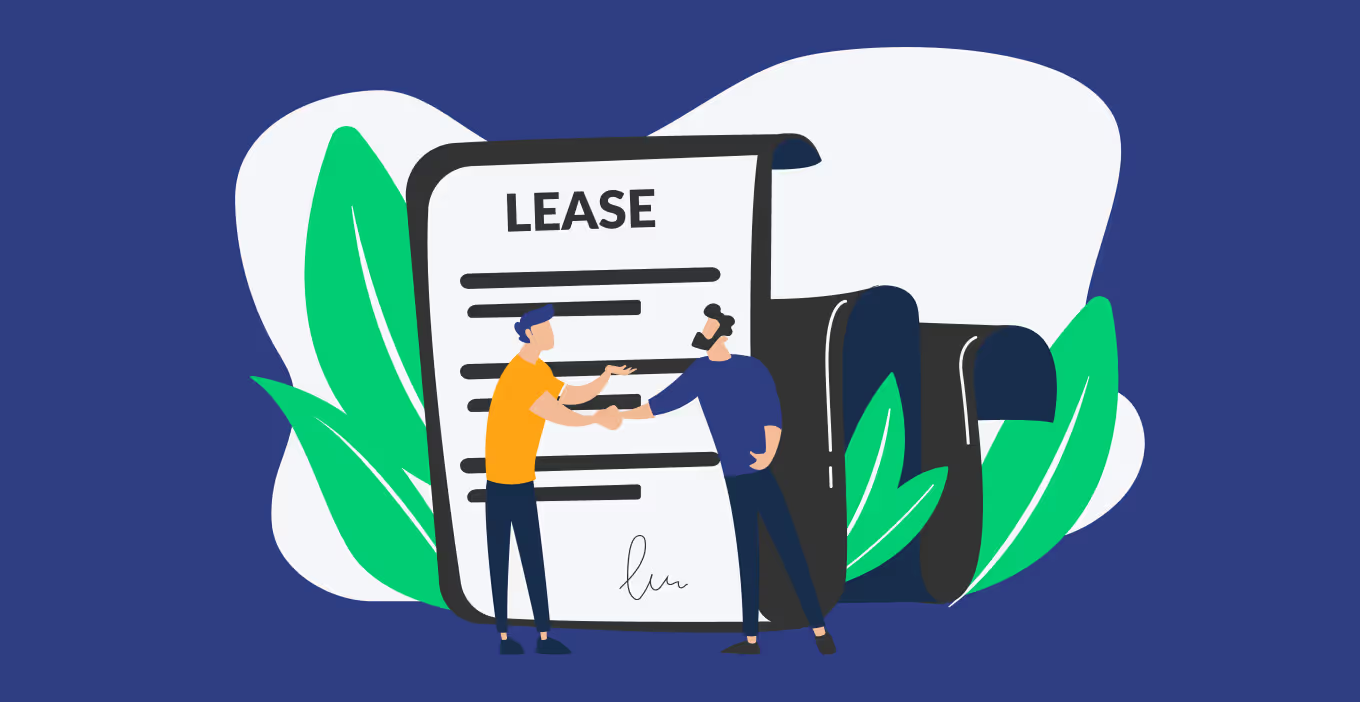For a landlord, finding a tenant can sometimes be a tough task.
There could be weeks of searching, interviewing, and screening, just to find a tenant interested in the rental property.
But, once that tenant has been found, it is like a dream come true for the landlord. From this point, only one thing remains - the lease agreement.
The lease agreement is essentially the document, or set of documents, that will dictate the tenant's stay at the property.
This document governs all aspects of the agreement between the property manager and the tenant. However, the entire process can be a bit long and confusing.
For this reason, we have compiled the entire process into one convenient guide. By the end of this guide, you will know everything about the entire lease signing process, including some tips to help you along the way. Speaking of tips: we have an entire blog post dedicated to the clauses every landlord should include to protect themselves in a lease. Be sure to check that out.
So, to get started, let's go over what the lease agreement is and what it governs.
What Does the Lease Agreement Do?
Lease agreements, in their simplest form, are contracts that are agreed upon by both the tenant and the landlord. These contracts are signed before the tenant moves into the property, and basically outline everything that both parties will be responsible for throughout the entirety of the rental lease.
Some of the things that are included in the lease agreement include:
- Appointment of Property Manager
- Manager's Responsibilities and Obligations
- Compensation
- Lease Term Length
- Monthly Rent Amount
- Security Deposit
...and so much more.
There are still many steps, however, between finding the tenant, creating the lease agreement, and getting it signed. Below, we will go over some of the steps that most landlords or property managers should take before drafting the lease. Then, we will explain some of the most important things that should be added to the agreement itself.
So, to get started, let's go over some of the things that should be prepared before signing the lease.
Steps Before Signing the Lease Agreement
Before signing the lease, there are some steps that the landlord should take. In this section, we have outlined some of these steps. Following these steps ensures a smooth process between the tenant and the landlord.
Decide on the Kind of Lease
The first thing that should be considered by the landlord is the kind of lease that will be agreed upon. Since the lease is a legally binding contract, it is important to seriously consider the best way to have it.
In some cases, having a verbal agreement with the tenant serves as a binding month-to-month tenancy. However, this is a very risky method as there is not much proof of an agreement between the two parties.
Even if it is a relative or a friend staying in the property for a few months, a written rental agreement is always a good idea. A written, signed lease agreement holds up far better than any verbal contract and it serves as a better guarantee that the landlord will receive every rent payment. Also, a written agreement is far more useful if something goes wrong with the tenant and they need to leave the property.
Thoroughly Screen the Tenant
One of the most important things to do before drafting or signing the lease is to make sure that you have found the best tenant. The best way to do this is by thoroughly screening potential tenants and conducting a background check.
If the tenant is not properly screened, or a background check isn't conducted, the landlord runs the risk of renting out to a troublesome tenant. This could bring countless problems to the landlord that can cost way more than the cost of a background check. These tenants can even cause a loss of rental income or worse, a lawsuit.
A thorough background check and screening also serve as a sign of whether or not the tenant will make timely payments. The reason for this is that the screening reveals the payment history of the tenant. The landlord can also see if the tenant has been evicted before or if they have had problems in the past. Along with this, most screening services generate a credit report that contains all of the tenant's credit history in one place. This is a huge step in the approval process as landlords typically won't rent to tenants with low credit scores.
So, if you want to be sure that your tenant submits all of their rent payments on time and actually sends in the total month's rent.
Have the Property Prepared
Another thing that is extremely important before signing the lease is to be sure that the property is up-to-date on any maintenance and all major repairs have been done to it. This step is far easier when you are dealing with an apartment lease, as there are not as many things to do in terms of maintenance.
The reason for having the property prepared is so that the prospective tenant can see what the property is like before signing the lease. If the tenant decides to take a tour of their dream apartment and finds some flaws in it, they may decide to find a new apartment.
So, for this reason, it is absolutely essential that the property be in its best shape before the tenant sees it.
Now that you have some of these important things covered, it is time to get to the lease. Since there are so many things to add to a lease, we have covered everything in its own section below.
What to Include in a Lease
A lease agreement is typically around 5-10 pages, front and back, packed with information. If this sounds like a lot of information, that's because it really is.
It is also very important to abide by all state and local laws in your area. If you want to find out about all of these laws, visit DoorLoop’s Laws Page to learn more.
Below, we have highlighted some of the most important points that should be included in your lease agreement.
Names of Tenants and Occupants
One of the most important things to include in a lease agreement is the names of the tenants and occupants that will be residing there. This means that every adult person should sign the lease or rental agreement.
Although this may sound strange, it serves as a kind of insurance for the landlord. Signing a lease means that you are legally obligated to live up to the lease terms, including rent payments and late rent fees. So, if every adult in the property signs the lease and the main tenant fails to pay rent, the landlord can legally pursue the other tenants to pay any late fees or overdue rent.
The agreement should also include some sort of clause that states that only the tenants included in the agreement may reside there. There can also be a set number of days that someone else may reside in the property.
Property Details
The lease agreement should also include a thorough description of the rental property itself. This means the address, parking spots, and storage areas. The address should also include anything like the building number or the unit number. Also, if there is assigned parking, this is where that will be explained and specified.
Term Length / Rental Price
Since these are typically some of the most important aspects of a lease agreement, being detailed is important. The first thing that should be mentioned in this section is the length of the lease. Rental agreements are typically month-to-month and last until the landlord or the tenant terminates them. However, a lease is typically a year. So, it is important to specify how the length of the lease term works.
Next, all the information about the rent should be included. This doesn't mean just the price of rent. In this section, you should include details regarding any late fees, payment methods, grace periods, or any other fees. Also include information on the security deposit, which is typically the amount of the first month's rent.
Maintenance Requests
Similar to having a way to pay rent, a tenant should also have a way to submit maintenance requests. There should be a requirement that the tenant must alert the landlord of any defective or dangerous situations.
The lease should also explain that the tenant has a responsibility to maintain clean and sanitary premises and pay for any excessive damage.
Any Other Rules or Policies
In this section, the landlord should add any other rules or policies that they would wish to enforce. This could be anything that the landlord would like prohibited from the property, like pets or smoking. The consequences of violating these rules should also be included alongside this.
Contact Information
Lastly, it is important that the landlord provide the best ways to be contacted by the tenants. Although text messages and emails may be sufficient for certain discussions, written methods may be better in front of a judge.
Conclusion
You have now found the perfect tenant, prepared the property, and written the lease agreement. Now it is time for the easy part - putting both signatures on the dotted line. And remember, always let the tenants sign first, as you don't want to be stuck with vacant property. Happy renting!
































.svg)
.svg)

